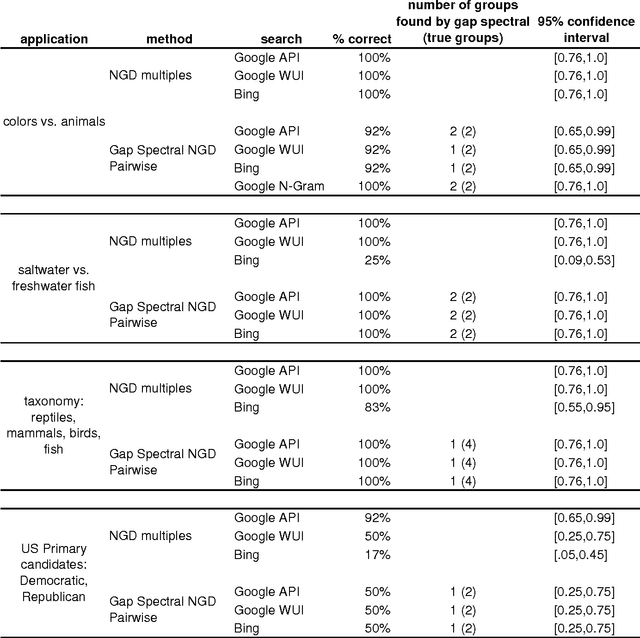P. M. B. Vitanyi
CWI and University of Amsterdam
Exact Expression For Information Distance
Jul 11, 2017Abstract:Information distance can be defined not only between two strings but also in a finite multiset of strings of cardinality greater than two. We give an elementary proof for expressing the information distance in terms of plain Kolmogorov complexity. It is exact since for each cardinality of the multiset the lower bound for some multiset equals the upper bound for all multisets up to a constant additive term.
Normalized Google Distance of Multisets with Applications
Aug 14, 2013


Abstract:Normalized Google distance (NGD) is a relative semantic distance based on the World Wide Web (or any other large electronic database, for instance Wikipedia) and a search engine that returns aggregate page counts. The earlier NGD between pairs of search terms (including phrases) is not sufficient for all applications. We propose an NGD of finite multisets of search terms that is better for many applications. This gives a relative semantics shared by a multiset of search terms. We give applications and compare the results with those obtained using the pairwise NGD. The derivation of NGD method is based on Kolmogorov complexity.
Information Distance: New Developments
Jan 05, 2012Abstract:In pattern recognition, learning, and data mining one obtains information from information-carrying objects. This involves an objective definition of the information in a single object, the information to go from one object to another object in a pair of objects, the information to go from one object to any other object in a multiple of objects, and the shared information between objects. This is called "information distance." We survey a selection of new developments in information distance.
* 4 pages, Latex; Series of Publications C, Report C-2011-45, Department of Computer Science, University of Helsinki, pp. 71-74
 Add to Chrome
Add to Chrome Add to Firefox
Add to Firefox Add to Edge
Add to Edge